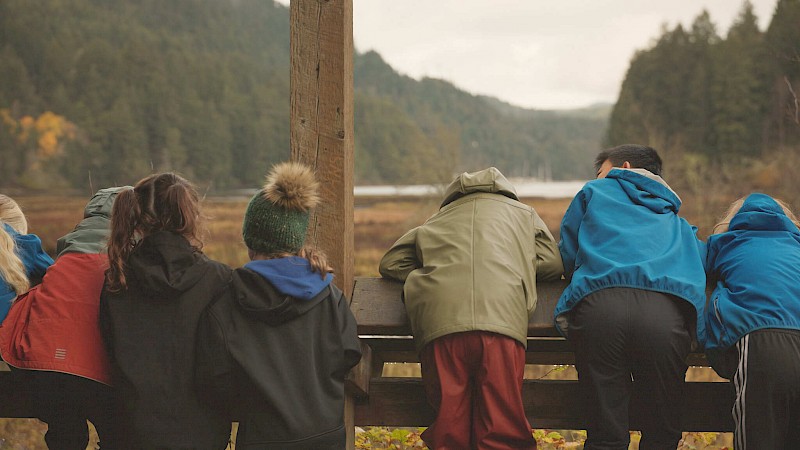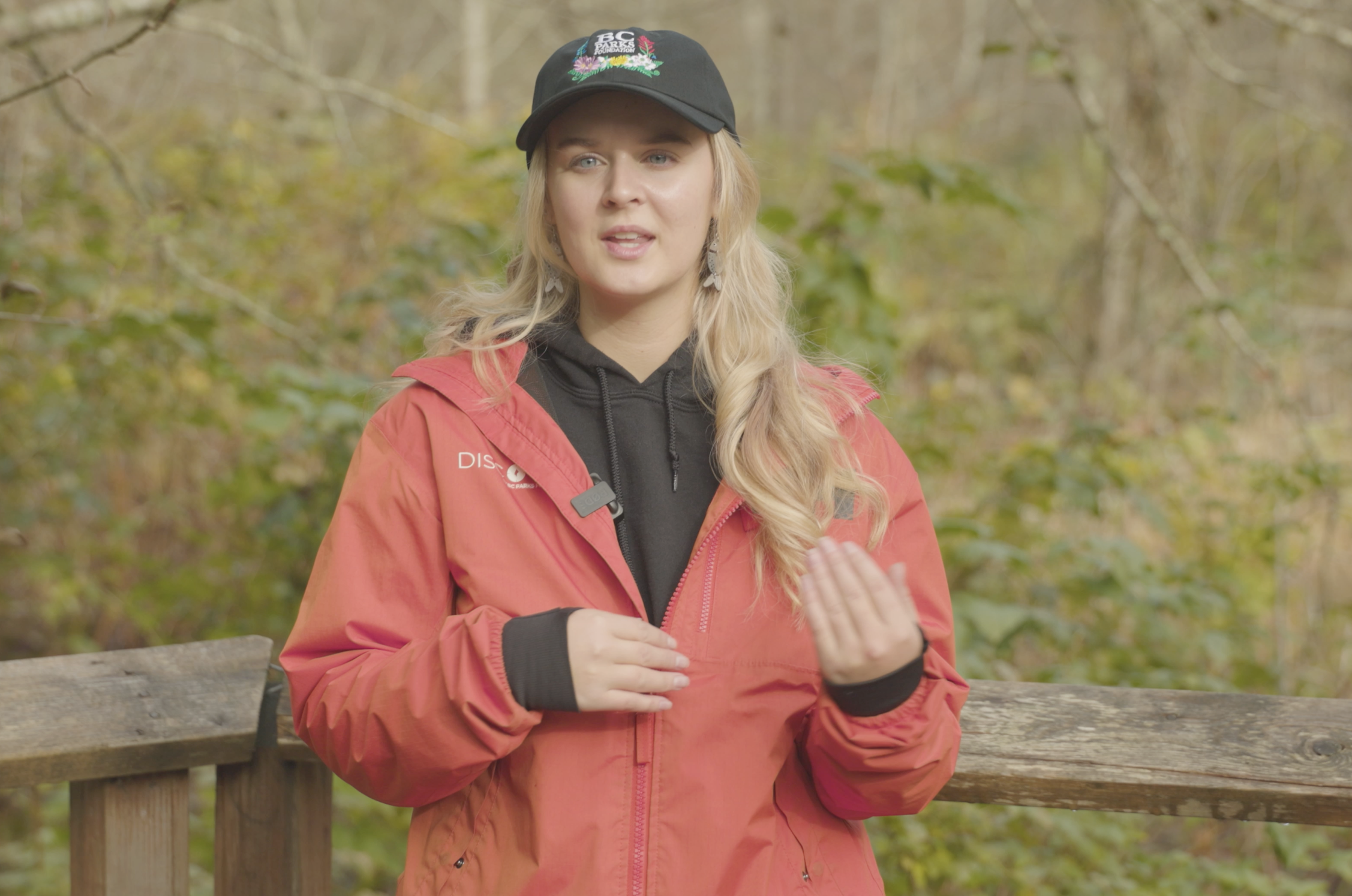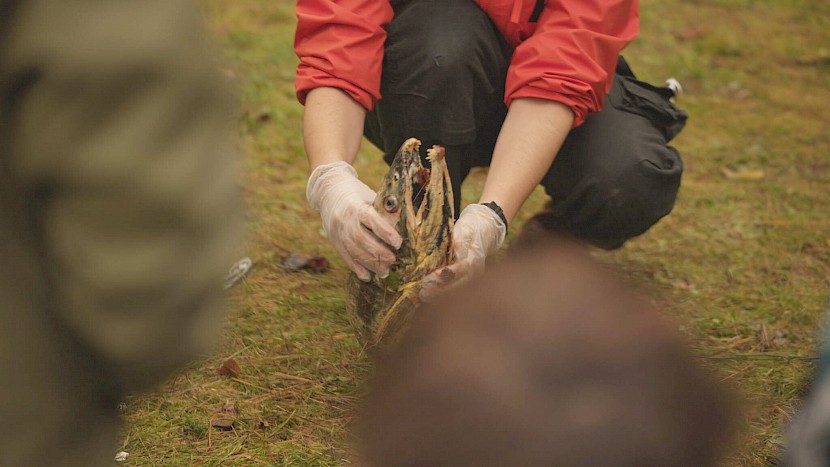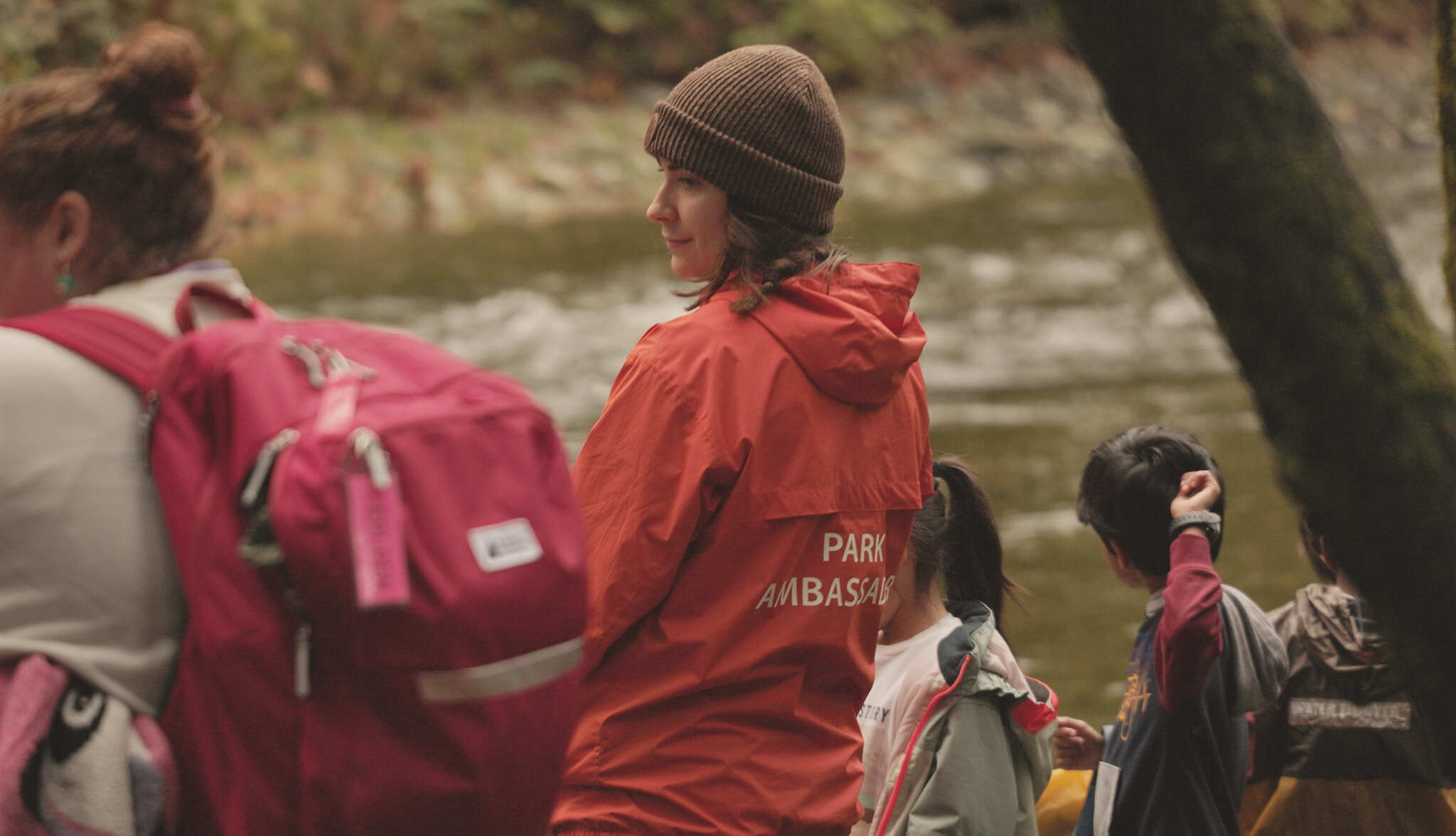BC Parks Foundation
Run, Salmon, Run: 4 Jaw-Dropping Facts About the Chum’s Epic Journey
November 22, 2024
Run, Salmon, Run: 4 Jaw-Dropping Facts About the Chum’s Epic Journey
From the moment the tiny salmon fry hatches in the bed of Goldstream River, its epic journey begins, taking it thousands of kilometres through the vast wild ocean. During its trip, it will undergo huge physical changes and face innumerable threats, culminating in one of the most spectacular natural events we can witness in many of BC’s parks and protected areas.
At Goldstream Park, the Discover Parks Ambassadors run programs that have educated over 3,000 students and park visitors on the salmon run this year. They are now reporting wonderful news: thanks to the cooler, wetter weather of 2024, the chum salmon have returned in bigger numbers—four times more this year than last!

“Chum are pretty picky about their conditions,” says Megan Howse with affection. As the Nature House Coordinator at Goldstream Park, she’s helped educate the public and school groups about the local salmon run since 2021. “That's why they hung out in the estuary for a while. You see them splashing around in the brackish water before they push up the river, because as soon as they hit fresh water, they only get a week or so to live. Once that water hits 11 or 10 degrees, it's go-time.”
And what a go-time it is. Here are four amazing facts about the salmon run happening right now in BC.
1. Salmon return to and die in the same place that they were born
In mid-November, a group of young students on a field trip to Goldstream Park have gathered around the fireplace in the Nature House as Carmen, a Discover Parks Ambassador, leads them through the first segment of the Salmon Run School Program.

“When the salmon are four years old, thriving in the frigid waters of the Bering Sea,” she shares, “they get this gradual and then overpowering impulse to travel thousands of kilometres back to Goldstream River, where they hatched.”
The students have questions, as do the adults, all various versions of, “Why?” and “How?” Goldstream’s Salmon Run Program helps answer those questions.
People in BC are captivated by the salmon run and find deep meaning in what it represents and shows us about nature and life. There’s genetic programming, hormonal changes, and environmental cues involved. But there’s also a lot of mystery, and what can appear to be just plain magic, which you can read more about below.
2. The salmon run is what makes BC’s coastal forests so massive and unique
The school group leaves the Nature House and walks to the banks of the estuary, where dozens of expired salmon have created a feast for local wildlife, such as bald eagles, bears, and wolves.
In the Nature House, the children learned how the journey from Alaska to Goldstream River is so strenuous and depleting that it marks the end of the salmon’s life.
"But look around you,” Carmen says. She gestures to the towering Douglas-fir, western red cedar, western hemlock, and the huge cottonwoods and bigleaf maples.

“When the salmon die, their bodies provide the nutrients that are necessary for every single level of the food chain to thrive, including these trees.”
Placing her hand on a nearby stump, Carmen encourages the kids to run their fingers along the ridges of the tree rings. “Do you feel which ridges are thicker than others?” she asks.
They can.
“Those are the years the salmon runs were particularly amazing. They made the forests grow bigger, and stronger. Our forests wouldn’t be as massive and beautiful as they are without the salmon.”
3. Salmon go through transformative physical changes as they swim from Alaska to Goldstream
Next, the students gather in a circle and look at a salmon specimen, which has expired naturally in the river. It now has two roles—it will help feed the ecosystem and help educate the public. Carmen pulls on latex gloves and asks the students, “Is this a male or a female?”

“Male!” the kids cheer. Its distinct hooked jaw, or kype, gives it away. But the male salmon isn’t born with a kype. The kype has developed only recently thanks to a surge in hormones and the change from saltwater to freshwater, which both prompt cartilage growth in the tip of the jaw, causing it to elongate and curve into a pronounced hook shape. The kype helps him fend off other males, who are competition when it comes to spawning, and signals to females he’s strong and healthy.
He’s also taken on the deep rich colours of green, purple, and red, as the carotenoids from his diet have moved from his pink flesh into the scales of his skin, another sign he was healthy and ready to mate.
4. Salmon have tiny particles of magnetite embedded in their tissue, which help them navigate their way home as if using a compass
We follow Carmen deeper into the forest, to a bend in the river teeming with salmon. There we can see the females digging their nests, or redds, while the males hover around them, protecting their position to be the one to fertilize these eggs. These fish are so big, strong, and meaty, it’s amazing to think they’re the same fish who hatched here four years ago.

Carmen shares more about the incredible feats of science, going into what, at first glance, can very well seem miraculous. For example, how tiny particles of magnetite embedded in salmon tissue allow them to navigate the earth’s magnetic fields like a compass. And how their extraordinary sense of smell—they can detect faint chemical cues in the water up to ten kilometres away—also helps them find their way back to their natal stream.
A female salmon, identifiable from the dark horizontal stripe along her belly, gets ready to dig her redd, while the male salmon, identifiable from his kype, protects their position in Goldstream River, 2024.We’re still learning about how these amazing creatures accomplish this extraordinary feat. But what's clear is that this ancient natural process is a gift that continues to strengthen and give life to all creatures, including humans, in BC.
Public programs run every Saturday from October 16 to December 4, 2024, at 11:00AM and 1:00PM. Explore the salmon run and other park activities at DiscoverParks.ca.
Love this? For more inspiring stories about conservation wins, community efforts, and ways you can help protect nature, subscribe to our newsletter today.
Similar Stories
“Look deep into nature, and then you will understand everything better.
”


